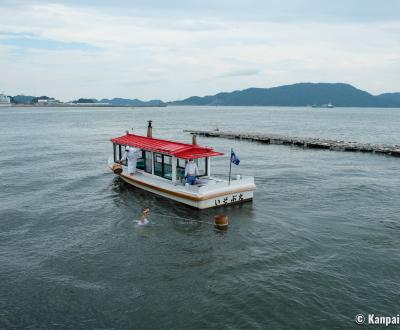Mikimoto Pearl Island
The Birthplace of Cultured Pearl
Mikimoto Pearl Island, initially named Ojima, is located in Ise Bay on the shore of Ise-Shima peninsula, in Mie prefecture. In the end of the 19th century, this small island located at the mouth of Kamo River has seen the first steps of pearl cultivation pioneered by Kokichi Mikimoto (1858-1954). Nowadays, it is home to several museums and pearl shops commemorating Mikimoto’s life and industrial success. Ama traditional Japanese women divers also perform demonstrations to visitors.
Kokichi Mikimoto was born in 1858 in Toba City, at the easternmost end of Mie Prefecture, in an area that was already famous at the time for its "Ise pearl". He began cultivating oyster pearls out of concern for their fast dwindling due to excessive fishing. After many unsuccessful experiences – he sometimes obtained only half of a round pearl, he devised the right technique in 1893 and developed cultured pearls in a viable industry in the beginning of the 20th century. He opened his first boutique in Tokyo’s classy Ginza district in 1899, then another one in London in 1913. The Mikimoto brand is now a world reference for jewelry and Kokichi Mikimoto is considered one of the greatest Japanese inventors.
The small Mikimoto Pearl Island is connected to Ise-Shima peninsula by a bridge and is within a few minutes walk from Toba’s main station. It is a sanctuary dedicated to Kokichi and his work arranged into 4 places of interest in the heart of a pleasant pine tree forest.
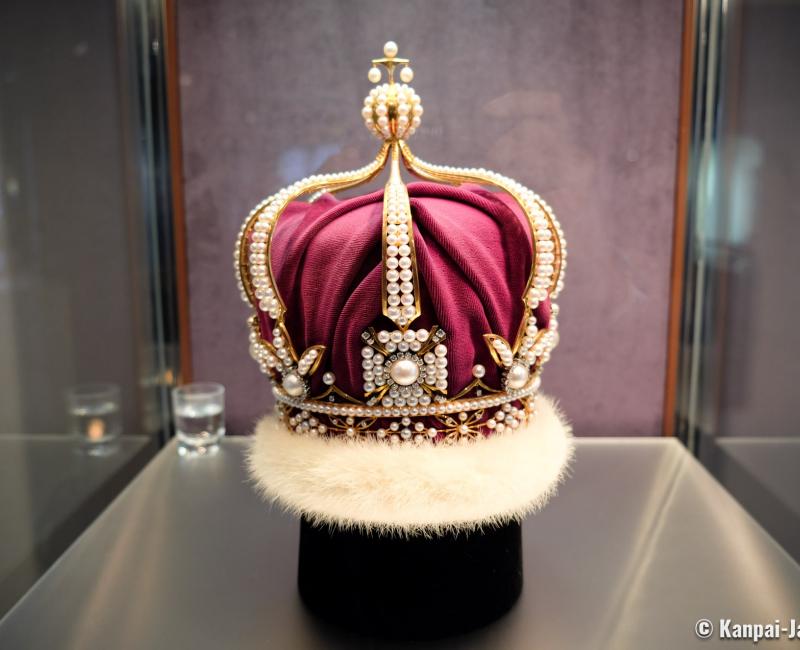
Pearl Museum
We recommend beginning the discovery by the island’s main museum: the Mikimoto Pearl Museum, that offers a very good introduction to the cultured pearl. The visit starts at the ground floor with explanations on the different types of pearls in the world and from which mollusks they are originating, such as oysters or abalones. Panels, videos and drawings are combined to help understand the various steps of a successful pearl cultivation and the obtaining of the mother-of-pearl:
- The natural and artificial pearl making,
- The techniques for sorting out pearls, and,
- The role of the Ama traditional Japanese divers in the production of pearl oysters.
This exhibition, both historical and educational, is very interesting, with various activities to try and objects to touch for children. The explanation texts are translated into English.
The first floor of the Pearl Museum is dedicated to antique pearl jewellery collected throughout the world and to artworks made using Mikimoto pearls. Some are absolutely stunning, such as a five-story pagoda, an earth-globe made with pearls and other precious materials, or royal crowns.
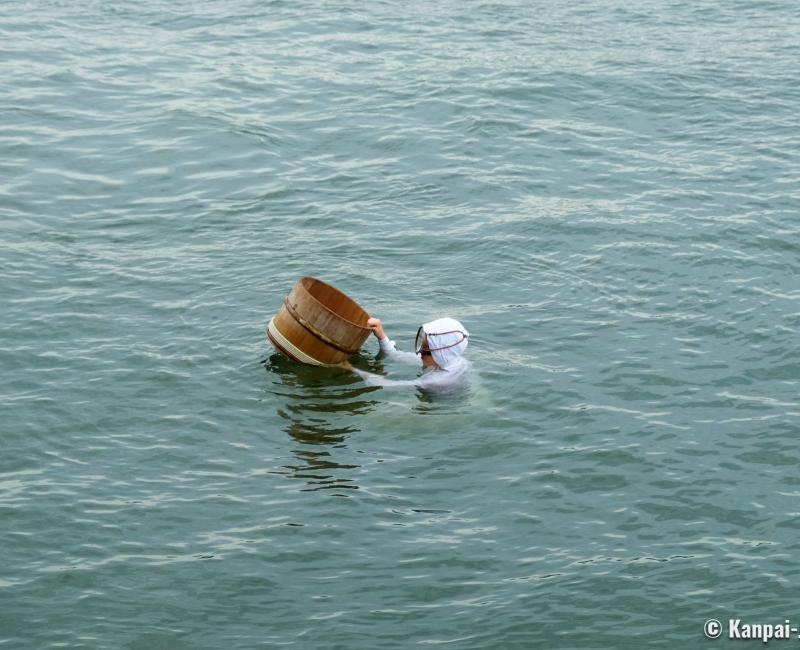
Observation platform on the Ama divers
Near the Museum’s exit, an observation platform is installed on the shore, and divided into two spaces:
- A free outdoor area, and,
- An indoor balcony, accessible for a fee.
The platform allows the viewing of free-diving demonstrations by the traditional women divers Ama (海女), whose name literally means "women of the sea" in Japanese. With their long white clothes, they used to be the ones diving to place the "mother oysters" under the sea and fishing them back once the pearls were formed.
Thanks to technological progress, the Ama do not need to dive for pearl cultivation anymore, but they continue to maintain their unique know-how thanks to tourism. The demonstrations are staged all year long and we do recommend to attend one. Each Ama dives in turn and stay less than one minute under the water, as they have to do it several times a day. To pace their breathing and protect their lungs, they produce a particular whistling sound that can be heard from the observatory.
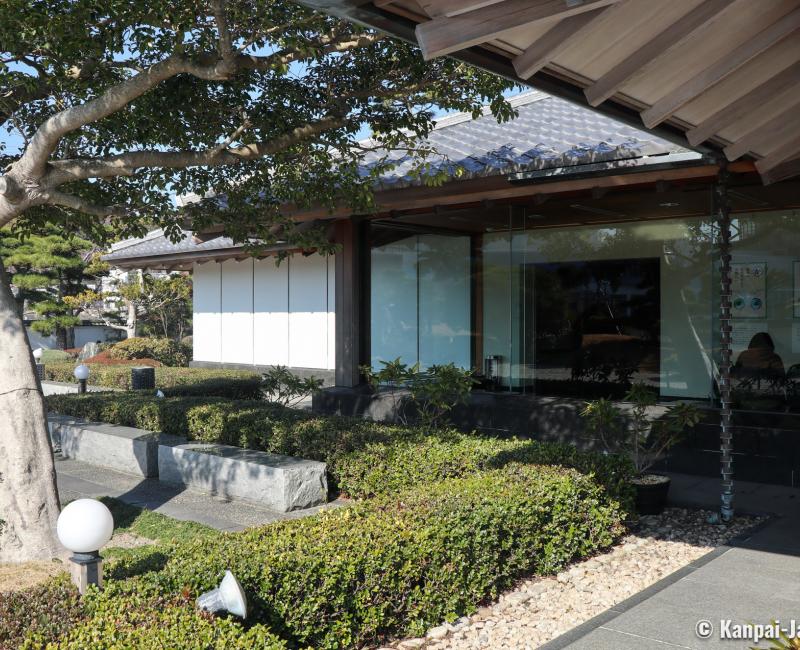
Kokichi Mikimoto Memorial Hall
As its name suggests, the second exhibition gallery on the Pearl Island is dedicated to Kokichi Mikimoto. In the seven rooms that reconstitute his house, the memorial retraces the life of the great inventor and industrialist who went through as many failures as successes before reaching his goal: producing a sufficient quantity of quality cultivated pearl.
A focus is also placed on the historical context of the Meiji Era (1868 – 1912), a time during which Kokichi developed his business, and what were the stakes and the difficulties of his project in this period.
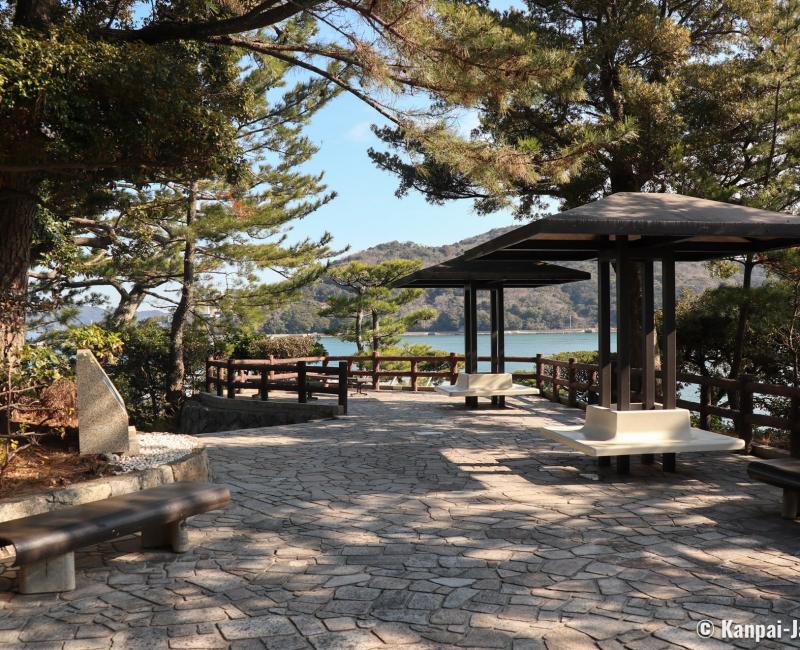
Pearl Plaza Jewelry
The sightseeing tour of the island ends by the traditional souvenir shop, which is here a jewelry named Pearl Plaza. Even if you’ re not planning to buy anything, don’t miss it as the displayed jewel collection is really beautiful and worth the detour. The prices range is wide and it is possible to purchase Mikimoto pearls for a few thousand yens 💴 (about a few dozen dollars).
At the second floor of the building, a restaurant offers a beautiful view on the bay, and a nice place for lunch or to take a coffee break.
There is no accommodation facility on Mikimoto Pearl Island, but there are many hotels available in Toba, such as the Toba Grand Hotel 🏨 or Shiojitei.
Located on the heights of the coastline, these hotel complex have a bird eye view on the bay, the forestry islets and the pearl farms in a fascinating landscape.

